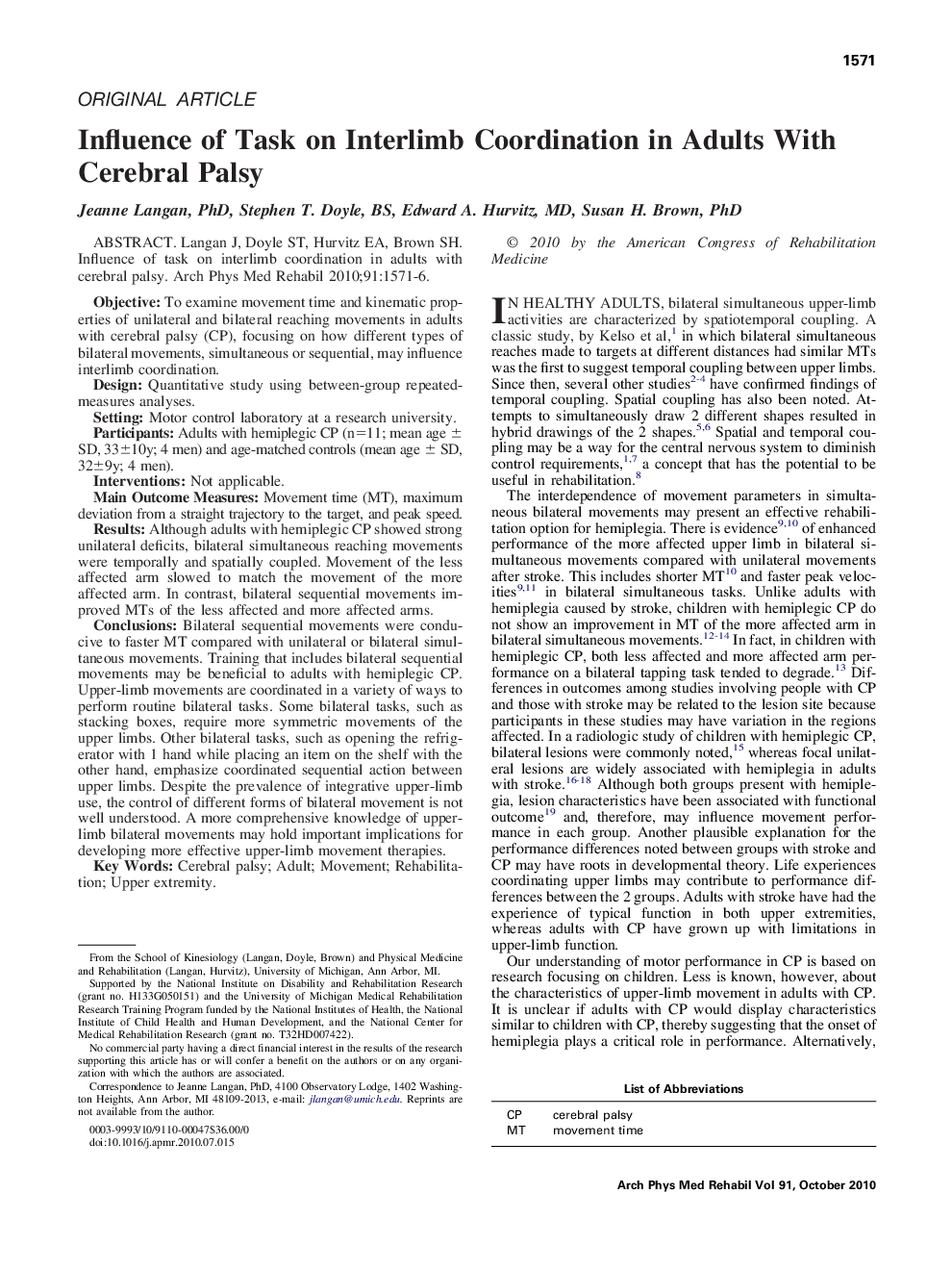| کد مقاله | کد نشریه | سال انتشار | مقاله انگلیسی | نسخه تمام متن |
|---|---|---|---|---|
| 3450949 | 1595747 | 2010 | 6 صفحه PDF | دانلود رایگان |

Langan J, Doyle ST, Hurvitz EA, Brown SH. Influence of task on interlimb coordination in adults with cerebral palsy.ObjectiveTo examine movement time and kinematic properties of unilateral and bilateral reaching movements in adults with cerebral palsy (CP), focusing on how different types of bilateral movements, simultaneous or sequential, may influence interlimb coordination.DesignQuantitative study using between-group repeated-measures analyses.SettingMotor control laboratory at a research university.ParticipantsAdults with hemiplegic CP (n=11; mean age ± SD, 33±10y; 4 men) and age-matched controls (mean age ± SD, 32±9y; 4 men).InterventionsNot applicable.Main Outcome MeasuresMovement time (MT), maximum deviation from a straight trajectory to the target, and peak speed.ResultsAlthough adults with hemiplegic CP showed strong unilateral deficits, bilateral simultaneous reaching movements were temporally and spatially coupled. Movement of the less affected arm slowed to match the movement of the more affected arm. In contrast, bilateral sequential movements improved MTs of the less affected and more affected arms.ConclusionsBilateral sequential movements were conducive to faster MT compared with unilateral or bilateral simultaneous movements. Training that includes bilateral sequential movements may be beneficial to adults with hemiplegic CP. Upper-limb movements are coordinated in a variety of ways to perform routine bilateral tasks. Some bilateral tasks, such as stacking boxes, require more symmetric movements of the upper limbs. Other bilateral tasks, such as opening the refrigerator with 1 hand while placing an item on the shelf with the other hand, emphasize coordinated sequential action between upper limbs. Despite the prevalence of integrative upper-limb use, the control of different forms of bilateral movement is not well understood. A more comprehensive knowledge of upper-limb bilateral movements may hold important implications for developing more effective upper-limb movement therapies.
Journal: Archives of Physical Medicine and Rehabilitation - Volume 91, Issue 10, October 2010, Pages 1571–1576